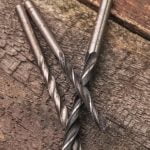What kind of router do I need woodworking? This is a common question among woodworking enthusiasts who understand the significance of selecting the right tools for their projects. The router plays a crucial role in shaping, trimming, and cutting wood, making it essential to choose one that meets your specific needs and requirements. In this article, we will delve into the importance of choosing the right router for woodworking projects, exploring different factors to consider when making your selection.
When it comes to woodworking, having the right tools can make all the difference in the outcome of your projects. Routers are versatile tools that come in various types such as plunge routers, fixed base routers, and combo routers. Each type has its own set of features and capabilities that cater to different woodworking tasks. Understanding the differences between these types can help you determine which one is best suited for your specific project requirements.
In addition to considering the type of router, factors like power, size, variable speed control, and router bits play a critical role in achieving precision and efficiency in woodworking tasks. The power of a router determines its ability to handle different types of wood and cutting depths, while variable speed control allows for greater control and accuracy during intricate cuts.
By understanding how these factors impact performance, you can make an informed decision when choosing the right router for your woodworking projects.
Types of Routers
When it comes to woodworking projects, choosing the right router is crucial to achieving precision and efficiency in your work. With a wide variety of routers available in the market, it can be overwhelming to pick the best one for your needs. Understanding the different types of routers is essential in making an informed decision on what kind of router you need for woodworking.
Here are the main types of routers commonly used in woodworking:
- Plunge Routers: Plunge routers are versatile tools that allow you to adjust the cutting depth while the router is running. They are ideal for tasks such as grooving, dadoing, and mortising. The ability to plunge the bit into the material makes it easier to start cuts anywhere on your workpiece.
- Fixed Base Routers: Fixed base routers are more stable and accurate than plunge routers, making them suitable for tasks that require precision and consistency. They are often preferred for edge profiling, dadoing, and template routing. The fixed base design ensures that the bit remains at a constant height during operation.
- Combo Routers: Combo routers offer the best of both worlds by combining features of both plunge and fixed base routers into one tool. These versatile routers allow you to switch between plunge and fixed base configurations, giving you more flexibility in handling different woodworking tasks.
Choosing between plunge, fixed base, or combo routers depends on the specific woodworking projects you plan to undertake. Consider factors such as ease of use, versatility, and precision when selecting the type of router that best suits your needs.
When determining what kind of router you need for woodworking, it’s essential to assess your skill level, project requirements, and budget constraints. Researching different router options and reading reviews from other woodworkers can help you make an informed decision. By understanding the various types of routers available and their capabilities, you can choose a router that will enhance your woodworking experience and elevate the quality of your projects.
Router Power
When it comes to woodworking projects, the power of your router plays a crucial role in determining the quality and efficiency of your work. The amount of power that a router possesses can greatly impact its performance in various tasks.
A higher-powered router is typically recommended for heavier woodworking tasks such as making deep cuts or working with hardwoods, while a lower-powered router may suffice for lighter projects or hobbyist use. Understanding the power requirements of your woodworking tasks is essential in choosing the right router for your needs.
One key factor to consider when assessing router power is the horsepower (HP) rating of the machine. Routers generally range from 1-3 HP, with higher HP models providing more cutting strength and versatility for handling different types of wood.
For professional woodworkers or those undertaking large-scale projects, investing in a high-powered router with at least 2 HP may be necessary to ensure smooth and precise results. On the other hand, hobbyists or DIY enthusiasts may find a lower HP router sufficient for their occasional woodworking needs.
In addition to horsepower, another aspect to consider is the amp rating of the router motor. Amps indicate the power consumption of the tool, with higher amp ratings corresponding to increased cutting power.
For heavy-duty woodworking tasks that involve frequent use of the router over extended periods, opting for a model with a higher amp rating can help prevent overheating and ensure consistent performance. Before selecting a router based on power requirements, carefully assess what kind of woodworking tasks you will be undertaking to determine the ideal power level for your projects.
| Router Power Features | Importance |
|---|---|
| Horsepower (HP) | Determines cutting strength and versatility |
| Amp Rating | Indicates power consumption and prevents overheating |
Router Size
When it comes to selecting the right router for your woodworking projects, considering the size of the router is crucial. The size of the router can have a significant impact on its performance and usability, affecting the outcome of your woodworking tasks. Here are some key points to keep in mind when choosing the size of a router for woodworking:
- Portability: A smaller, more compact router may be easier to maneuver and transport, making it ideal for projects that require mobility or working in tight spaces.
- Stability: On the other hand, larger routers tend to provide more stability and control when handling larger pieces of wood or when working on heavy-duty projects.
- Comfort: The size and weight of the router can also influence user comfort during prolonged use. Make sure to choose a size that feels comfortable and ergonomic in your hands.
Ultimately, the size of the router you choose will depend on your specific woodworking needs and preferences. Consider factors such as the type of projects you typically work on, the level of precision required, and your own comfort level when using different sizes of routers.
In addition to considering the physical dimensions of the router itself, it’s also important to think about how its size relates to its performance capabilities. A larger router may have more powerful motors and higher speeds, allowing for faster cutting and smoother finishes on your woodworking projects. However, smaller routers can still be highly effective for certain tasks and offer portability advantages that larger models may not provide.
When deciding on what kind of router do i need woodworking based on size, take into account both your current woodworking needs as well as any potential future projects you may undertake. Finding a balance between performance, usability, and comfort will ensure that you select a router that enhances rather than hinders your woodworking experience.
Variable Speed Control
Having variable speed control in a router also enables woodworkers to use different sizes and types of router bits effectively. Larger router bits typically require lower speeds to avoid overheating and ensure safe operation, while smaller bits can operate at higher speeds for intricate detailing work. By being able to tailor the speed settings to match the requirements of each woodworking task, woodworkers can achieve greater accuracy, efficiency, and overall quality in their projects.
When selecting a router with variable speed control for woodworking precision, it is essential to opt for a model that offers easy-to-use speed adjustment mechanisms. Some routers have dial controls that allow users to set the desired speed quickly and accurately, while others may feature electronic controls for more precise adjustments.
Additionally, considering the range of speeds available in a router is important – having a wide range of options gives woodworkers more flexibility in handling various woodworking tasks with different requirements.
Router Bits
Straight Bits
Straight bits are one of the most common types of router bits used in woodworking. These bits have a straight cutting edge and are ideal for making straight cuts, grooves, or dados. They come in various sizes and can be used for different woodworking tasks such as edge profiling, joinery, or template routing. Straight bits are versatile and essential for any woodworker’s collection.
Flush Trim Bits
Flush trim bits are designed to provide an exact replica of a template or pattern. These bits have a bearing at the tip that rides along the edge of the material, ensuring precise cuts that follow the shape of the template. Flush trim bits are commonly used for trimming laminates, veneers, or patterned pieces to achieve a flawless finish. With their accuracy and efficiency, flush trim bits are indispensable for woodworking projects that require replicating specific shapes.
Round Over Bits
Round over bits create a smooth rounded edge on wooden surfaces, perfect for adding decorative details to furniture pieces or countertops. These bits remove sharp corners and soften edges, giving a professional look to woodworking projects. Round over bits come in various radius sizes to accommodate different design preferences. Whether you are working on cabinets, shelves, or tables, round over bits can elevate the appearance of your creations with ease.
When considering what kind of router do I need woodworking purposes, it is crucial to understand the variety of router bits available and how they can impact the outcome of your projects. Investing in high-quality router bits that suit your specific woodworking needs will not only improve precision but also enhance the overall craftsmanship of your creations.
By having a selection of different router bits in your arsenal, you can tackle various tasks with confidence and creativity in your woodworking endeavors.
Safety Features
When it comes to woodworking, safety should always be the top priority. This is why selecting a router with essential safety features is crucial to prevent accidents and ensure a smooth woodworking experience. One of the most important safety features to look for in a router is the electronic brake, which helps stop the spinning bit quickly after you turn off the tool. This can significantly reduce the risk of accidental cuts or injuries when using the router.
Another critical safety feature to consider in a woodworking router is a reliable spindle lock. The spindle lock allows you to change router bits easily and securely, minimizing the chances of the bit coming loose during operation. Additionally, routers with ergonomic handles and grips can provide better control over the tool, reducing hand fatigue and enhancing overall safety while working on projects. These features may seem small but can make a big difference in maintaining a safe work environment.
Furthermore, routers with efficient dust collection systems are also essential for woodworking safety. Woodworking produces a lot of sawdust and wood chips that can obstruct your view of the cutting area and pose respiratory hazards if not properly managed.
A router equipped with a dust collection system helps keep your workspace clean, improves visibility, and protects your lungs from inhaling harmful particles. Considering these safety features when choosing a router for woodworking will not only protect you from accidents but also contribute to a more productive and enjoyable woodworking experience.
| Safety Feature | Importance |
|---|---|
| Electronic Brake | Quickly stops spinning bit to prevent accidents |
| Spindle Lock | Safely secures router bit during operation |
| Ergonomic Handles | Enhances control & reduces hand fatigue for safer operation |
Additional Features
When considering what kind of router you need for woodworking, it’s essential to think about additional features that can enhance your overall experience and make your projects more efficient. Optional features like dust collection systems, LED lights, and soft start functions can be valuable additions to your router setup.
Dust Collection Systems
One crucial additional feature to look for in a router for woodworking is a dust collection system. Woodworking can create a lot of sawdust and debris, which can be harmful to your health if inhaled. A router with an effective dust collection system can help keep your workspace cleaner and improve air quality by capturing the dust as you work.
LED Lights
Another beneficial feature to consider when choosing a router for woodworking is integrated LED lights. These lights can provide better visibility of your workpiece and cutting area, especially in dimly lit workshops or when working on intricate details. LED lights help illuminate the path of your router bit, allowing for greater precision and accuracy in your woodworking projects.
Soft Start Functions
Soft start functions are another optional feature that can make using a router for woodworking easier and safer. A soft start function gradually increases the speed of the router when it’s turned on, which reduces sudden jerking or kickbacks. This feature not only enhances safety but also helps prevent damage to the material being worked on.
Additionally, a soft start function prolongs the life of the motor by reducing stress during startup. When looking for a router for woodworking, consider these optional features to enhance your overall experience and achieve better results in your projects.
Conclusion
In conclusion, when considering what kind of router you need for woodworking projects, it is crucial to take into account various factors to ensure the best results. The type of router, whether plunge, fixed base, or combo, will depend on the specific woodworking tasks you plan to undertake.
The power of the router is also a critical consideration as it directly impacts the efficiency and performance of the tool. Additionally, the size of the router can affect its maneuverability and usability in different woodworking scenarios.
Variable speed control is another essential feature to look out for in a router for woodworking purposes. This function allows for greater precision and control over your cuts, leading to more accurate and professional-looking results. Furthermore, investing in high-quality router bits is key to achieving desired outcomes in different woodworking projects. The right bits can make all the difference in creating smooth edges, intricate designs, and precise cuts.
Lastly, safety features should not be overlooked when selecting a router for woodworking. Ensuring that the tool has necessary safety mechanisms can prevent accidents and injuries while working on projects.
While additional features like dust collection systems, LED lights, and soft start functions can enhance your overall woodworking experience, they are not essential but could be useful depending on your preferences. By carefully considering these key points outlined above, you can make an informed decision on what kind of router you need for your woodworking endeavors.
Frequently Asked Questions
What Kind of Wood Working Router Do I Need?
When choosing a wood working router, it’s important to consider the type of projects you will be working on. For beginners or those focusing on smaller tasks, a trim router may be sufficient. However, for more advanced projects and heavier-duty tasks, a plunge router with variable speed control would be more appropriate.
What Is the Best Use of Router in Woodworking?
The best use of a router in woodworking is for shaping edges, cutting profiles, creating joinery such as dovetails and rabbets, and hollowing out areas like inlays or mortises. Routers are versatile tools that can add intricate details and precision to wood projects that may not be achieved with other tools.
What Are the 2 Types of Hand Routers?
There are two main types of hand routers commonly used in woodworking: fixed base routers and plunge routers. Fixed base routers have a stationary base where the bit depth is set before operation, making them ideal for precise cuts along edges.
On the other hand, plunge routers have a spring-loaded base that allows the bit depth to be adjusted while the router is operating, making them suitable for tasks like dado cuts and roundovers. Both types have their own strengths depending on the project requirements.

Hi everyone! I’m a woodworker and blogger, and this is my woodworking blog. In my blog, I share tips and tricks for woodworkers of all skill levels, as well as project ideas that you can try yourself.





